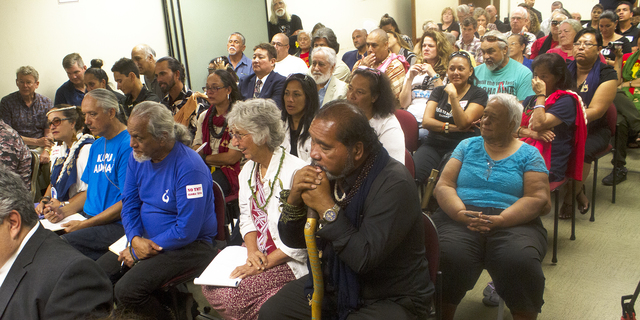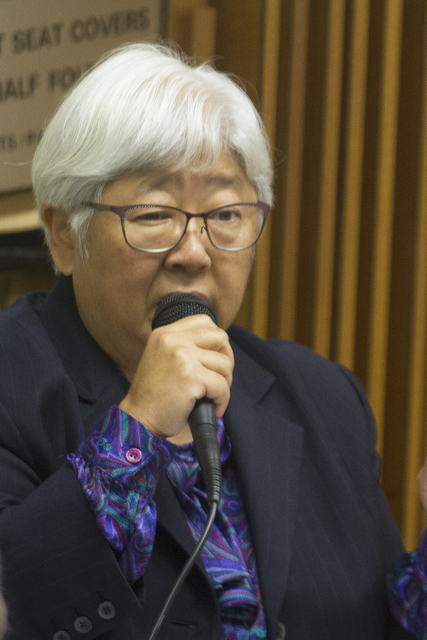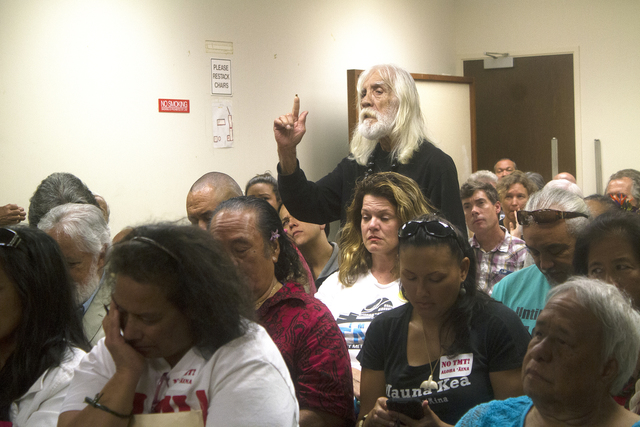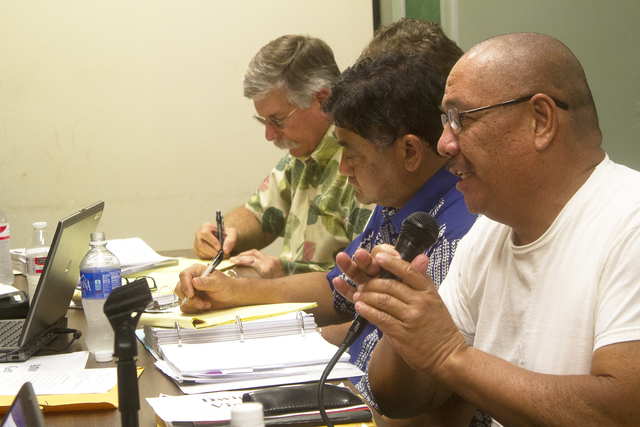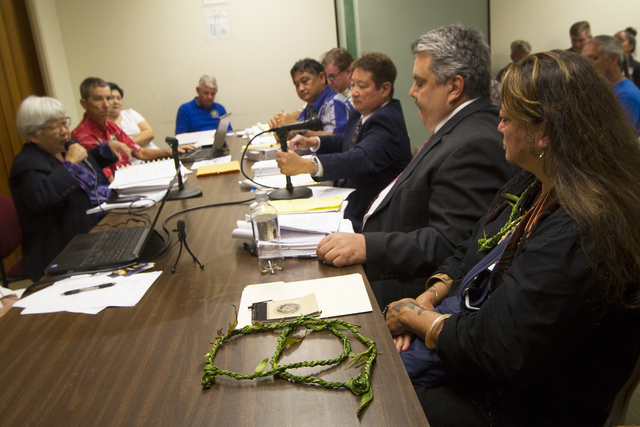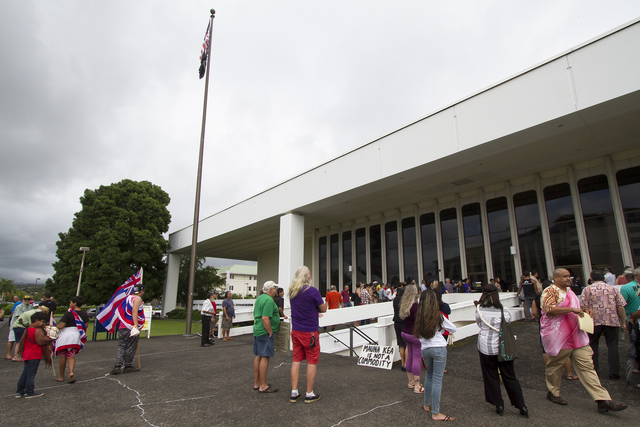‘Aloha for everyone’: Amano permits all parties to participate in TMT contested case
Riki May Amano is giving everyone a seat at the table as she prepares to start a new contested case hearing for the Thirty Meter Telescope’s land use permit.
ADVERTISING
During her first pre-hearing conference in Hilo on Friday, the hearings officer accepted 14 new parties, essentially everyone who applied and showed up to the cramped meeting room at the State Building on Aupuni Street. Five others opted to become witnesses instead.
The new parties include the TMT International Observatory, Perpetuating Unique Educational Opportunities Inc., and a dozen Native Hawaiians opposed to building the giant telescope on Mauna Kea, including some arrested while blocking construction last year.
Each will be allowed to call witnesses and make their case for or against granting TMT a permit to build the next-generation observatory near the top of the mountain, which holds cultural and environmental significance and is considered sacred by some.
The retired judge indicated she wanted everyone to be heard while at the same time cautioning the new parties they will have to meet the quasi-judicial hearing’s deadlines and hefty paperwork burden or risk losing their status. Many appeared without attorneys.
“I have a lot of aloha for everyone here,” said Amano, whose selection as hearings officer has been questioned by project opponents.
The new parties will join the six petitioners in the original contested case held five years ago and the University of Hawaii at Hilo, the permit applicant.
The state Supreme Court remanded the permit for another contested case hearing after ruling in December that the state Board of Land and Natural Resources violated due process rights by voting to approve it before the hearing was held. Prior to the ruling, TMT attempted to proceed with construction of the 180-foot-tall observatory, but that work was halted by numerous protests.
Joseph Kualii Lindsey Camara, who protested construction and was accepted as a party Friday, said he felt reassured by Amano opening the process to others.
“She seems like she is being fair, and I hope the process continues to be fair and transparent,” he said. “I’m more optimistic now than I was this morning.”
It remains to be seen how many of the new parties will be able to meet all of the contested case’s deadlines and criteria, including filing and responding to motions. Parties who fail to meet the requirements, including paying a $100 fee, will be dismissed, Amano said.
She received a sign of how untenable the current number might be as she asked everyone to estimate how many witnesses they might call.
The final tally came to about 140, though some appeared unsure of how many they would need.
One man said he didn’t understand what exactly a witness does but guessed he would need five.
Amano estimated the hearing could take 3-4 consecutive weeks and said she would require everyone to attend, even if that meant issuing subpoenas.
The hearing in 2011 lasted seven days spread out over a couple of months. The witness list then was somewhere between 20 and 30, a UH-Hilo attorney estimated.
Douglas Ing, an attorney representing TMT, said he felt there was still adequate time for the hearing to take place.
“Clearly it will slow down the process, but I believe it is necessary,” he said. “It needs to be fair.”
TMT representatives, who selected Mauna Kea in 2009, have said they want to know by the end of this year or early next year if they can proceed with construction. Otherwise, they might build the telescope somewhere else.
The parties will meet again Aug. 5 in Hilo for pre-hearing motions.
TMT’s partners include Caltech, University of California, Association of Canadian Universities for Research in Astronomy, and national institutes in Japan, China and India.
Email Tom Callis at tcallis@hawaiitribune-herald.com.


